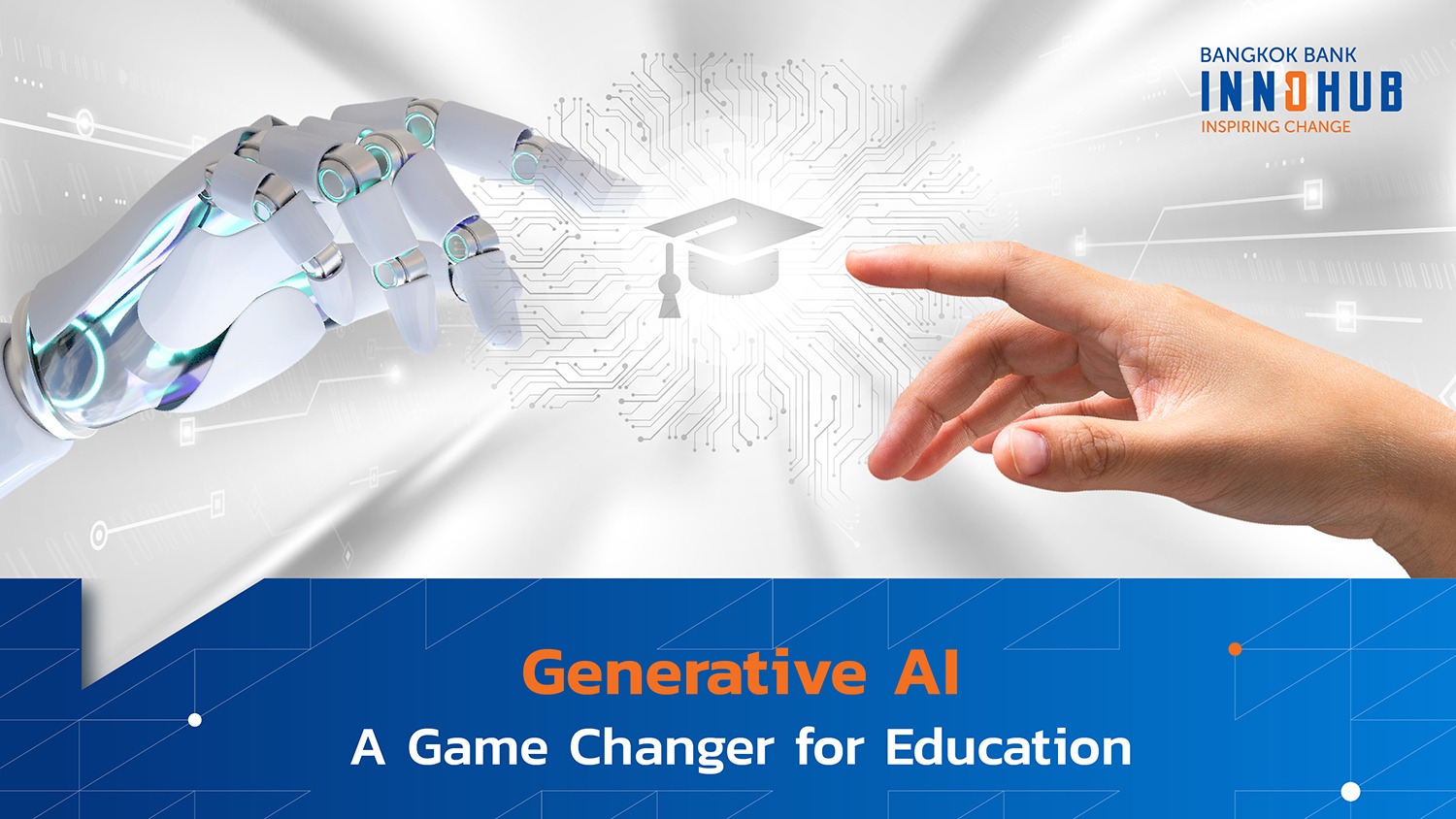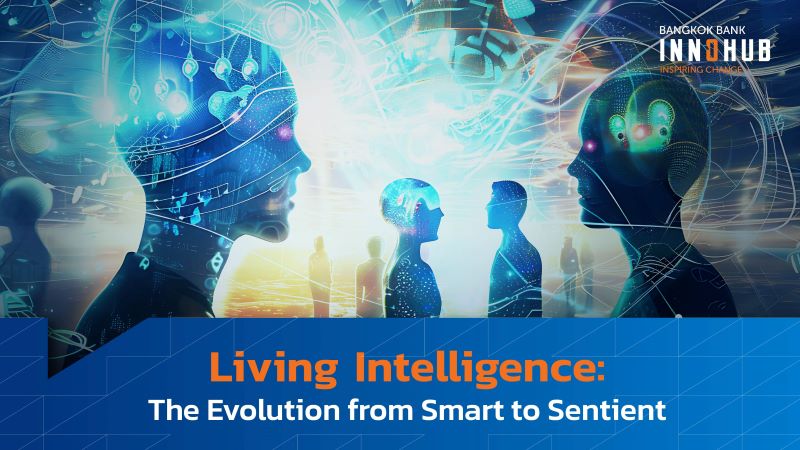Generative AI, a technology that leverages deep learning models to create human-like content in response to complex prompts, has exploded in popularity with the emergence of ChatGPT and DALL-E.
The impact of this technology on society, however, has sparked a great deal of debate. Some view AI software, with its ability to tempt students toward plagiarism, as a particularly potent threat to the education system; while others compare it to the pocket calculator — whose introduction certainly forced math teachers to adapt their classroom approach, but never came close to making algebra or calculus classes obsolete.
It is worth stressing that students today can still perform long division and calculate exponents without the aid of modern technology. Yet writing and research are powerful methods of training one’s mind. Could students’ critical thinking skills be harmed if they outsource these tasks to AI?
Here we investigate the threats as well as the benefits that AI could have on the future of education from the perspective of both students and educators, while discussing ways to make AI enhance student development rather than thwart it.
A threat to education?
As generative AI models such as ChatGPT become more widespread both in and out of the classroom, many are concerned that students will lose their ability to think critically and creatively. If students rely too heavily on this technology, their ability to engage in critical thinking, problem solving, and independent thought could be hindered.
Furthermore, easy access to generative AI could discourage students from independently acquiring and processing information, which would stunt their intellectual growth and undermine the primary goal of education, which is to encourage inquisitiveness, critical thinking, and originality.
Just as important is the matter of plagiarism and plagiarized content in the classroom. Essays, reports, and other written content can be obtained in seconds through generative AI, leading some to worry about the effects of this technology on students’ ability to produce unique work.
When generative AI is used, it is difficult for teachers to determine whether or not a student has plagiarized their work. This uncertainty can undermine the integrity of the education system, devaluing the effort put into genuine learning and intellectual exploration. Students may also be tempted to cheat by exploiting generative AI tools, as they can simply copy and paste AI content instead of doing the work themselves.
Generative AI for students
The issues raised above will require adaptation on the part of educational institutions, such as increased comprehension checks in class to confirm that students are indeed absorbing the skills and knowledge derived from their homework.
But it is a mistake to see AI purely as a threat to education, without also focusing on the many benefits it provides. AI models can accelerate student learning by providing instant explanations on specific topics or concepts that they may be struggling with. With clarification from AI allowing for better comprehension, students are less likely to fall behind on their studies. AI can help students learn by:
- Walking students through the steps needed to complete math, physics, and chemistry tasks — all while explaining the concepts and methods behind the solutions. Instead of having teachers rewrite the same examples and solve them on a board, generative AI can come up with unique examples, enabling students to apply mathematical concepts and rules to multiple problems under different circumstances.
- Providing supplementary examples, analogies, and explanations to make complex ideas more accessible. A student may, for instance, inquire how supply and demand work in practice. Generative AI could explain the concept as a tug of war between buyers and sellers, showing consumer demand rising when a new product is released in limited quantities, and why such situations result in higher prices. On the other hand, if there is a surplus, the AI could illustrate why sellers might need to lower prices to attract buyers.
Delivering constructive criticism on students’ written work, including suggestions for better grammar, sentence structure, or word choice. In some cases, students could use AI tools to draft the first version of essays and other written assignments, helping them save time and produce higher-quality results. As initial tasks such as brainstorming or coming up with outlines can be tedious and time-consuming, generative AI can help kickstart a student’s research project or essay by providing brief drafts or ideas, saving time for more creative elements of the assignment.
Generative AI for teachers
In terms of lesson planning, generative AI can be a valuable resource for teachers. With the help of AI-generated suggestions, educators can save time when developing new content. AI can also help teachers develop fresh concepts for lessons, activities, and projects that are tailored to students’ needs as well as the wider curriculum. The use of AI in the classroom can relieve educators of many mundane tasks, allowing them to concentrate on improving student learning and creating more interesting, relevant lessons.
AI can also serve as a helpful tool for task checking. With its ability to review and correct grammar, spelling, punctuation, and syntax errors, teachers can rely on AI to assist in the editing process of written materials. As it becomes easier to deliver timely and accurate feedback on students’ essays and assignments, teachers can dedicate more time to guiding students toward improving their overall writing skills. However, it is also important for teachers to remember that while AI can be a valuable aid, it should not replace the comprehensive assessment and empathic feedback that only personal feedback can provide.
Even before each semester begins, AI can help teachers design syllabus outlines and course objectives, generating topics for discussion, planning lessons, and identifying relevant resources and materials for each course. By leveraging AI in the syllabus design process, teachers can enhance the structure and organization of their courses while ensuring that the content aligns with the intended learning outcomes. AI assistance allows teachers to efficiently create comprehensive syllabi that provide a roadmap for successful teaching and learning experiences.
Education for a digital future
AI is never a panacea, and the quality of its outcomes depends on its use and management. Even with proper management, there has been an alarming trend of generative AI producing false or misleading content. Nevertheless, a fear of AI will only bring trouble in the long run, as it will be impossible to stop the technological tide forever. As generative AI is increasingly integrated into educational settings, it is important to guide its use toward the promotion of insightful intuition, critical thinking, and self-development. With this in mind, educators are encouraged to incorporate the use of these tools into their teaching practices and the learning processes of their students.
By encouraging students to openly tinker with generative AI in the classroom, educators can nurture a mindset of critical thought and improvement. Teachers should proactively train students to enhance or expand upon an AI’s recommendation, and then evaluate each learner’s performance according to their capacity to create and improve upon existing resources. From that foundation, students will clearly see how generative AI fits into the larger context of their own personal growth.
Given that every student is unique in their capability and capacity to learn, AI’s ability to personalize lessons can help future generations realize their true potential. This improved skills development, and the confidence that comes from it, will help young graduates become promising professional talents in the competitive job markets of tomorrow.




